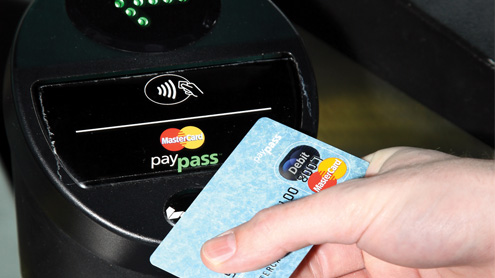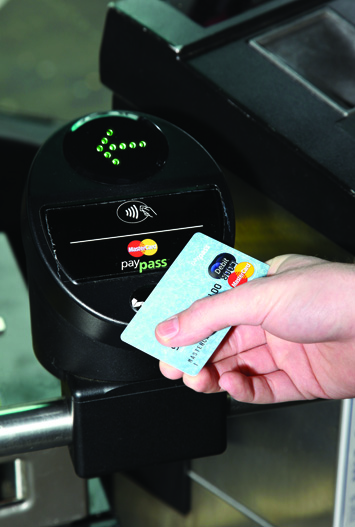
Michael Nash of Xerox Services explains the concept of open fare

By Richard Tackett
Xerox Services, Dallas, TX, a Xerox brand formerly known as Affiliated Computer Services (ACS), has been in the fare collection arena since 2006. From developing smart card technology for various transit systems, Xerox graduated its practices to open-loop technology with key open payment pilot programs in New York and New Jersey.
NJ Transit, with the help of Xerox, began allowing riders in 2010 to simply tap or wave their bank cards to purchase rides. Using the “contactless” routes, which expanded to six last year, customers are charged based on distance traveled.
For Xerox, it’s all about coordinating fare payments and retail transactions under the same umbrella. Buying a separate card for a specific kind of payment, in this case a transit fare, is a redundancy that open-loop technology can eliminate.
“When we say open payments, the ‘open’ really refers to open standards,” says Michael Nash, senior vice president, Transportation and Local Governments – Americas at Xerox. “When you move into the Visa and MasterCard world, both organizations work very hard to make sure that you can use their products anywhere in the world. Those standards ensure that fare payments follow all of the standard protocols and rules of payment.”
Nash came to Xerox, then ACS, six years ago after stints with Visa and American Express. Because his previous work focused on bringing card payments to new industries, Nash is particularly qualified to coordinate bank card payments with transit.
“I don’t know how many people have spent their careers in both payment cards and transit fare collection,” he says. “The industries have converged, with the transit industry wanting to be much like a restaurant or retail establishment and accept payments from the cards that people are already carrying. In looking at the kinds of challenges a transit agency would need to overcome to make that a reality, it was good to have a fundamental understanding of how the other side worked.”
In addition to his responsibilities at Xerox, Nash holds a vice-chair position on the Smart Card Alliance’s (SCA) Transportation Council. The SCA advocates for the proliferation of smart cards in all retail payments, with special emphasis on transit fares. The non-profit has brought together some of the industry’s foremost thinkers to devise open payment solutions for transit.
“The Smart Card Alliance was a hotbed of thinking,” Nash recalls. “We debated about how convenient it would be if you went into McDonald’s and they required purchasing a McDonald’s card before purchasing a hamburger. It was that kind of thinking that prompted people to ask, ‘What would it take to have that machine taken out and have people just walk up, tap a card on a gate, and off you go?’”
That line of thinking, Nash says, is behind the core concept of open-loop payments. He’s not sure, however, if the transit industry will ever enforce 100 percent cashless transactions.
“I’ve spent my career looking for ways for people to not use cash, but it’s my belief that there will be some percentage of riders that will use money,” he says.
The main benefit of open fares, Nash says, and the main goal of Xerox Services, is to push fare collection into the sophisticated world of revenue management where companies like Visa and MasterCard reside. The method is already established, he says, and now it’s just a matter of integrating that method with the logistics of the transit industry.
“By moving into the open payments world, transit can take advantage of all of the efforts and infrastructure that the financial industry has supported to create global interaction,” he says. BR
